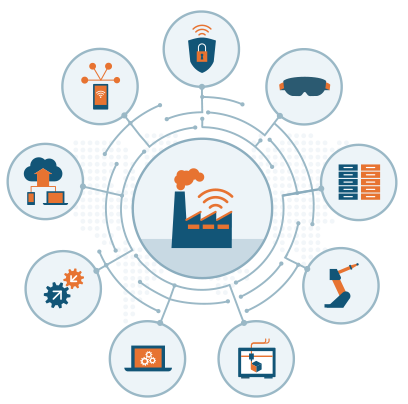Industry 4.0 and the arrival of new connected technologies on the factory floor have made the industrial internet of things (IIoT) a central topic of conversation over the past year. What’s getting less attention — but is perhaps even more important — is the demand for cloud-based computerized maintenance management systems (CMMSs).
These two aspects of next-gen tech go hand in hand: We sync and monitor IIoT devices through the cloud, managing them with a connected CMMS.
As manufacturers make the shift to condition-based maintenance, adoption of IIoT devices is inevitable. However, before this transition can be successful, manufacturers must make the investment in a cloud-based CMMS.
Barriers to cloud CMMS adoption
Most manufacturers have begun to explore the IIoT in some capacity, but few are starting with a cloud-based CMMS. The chief delay here is reliance on legacy CMMS systems that may not be cloud-enabled. Years — sometimes decades — of robust maintenance data and processes anchor legacy systems, making them almost impossible to supplant. In some cases, handwritten logs may still be the norm, making the transition even more of a shock.
Another issue that can quickly table discussions of a CMMS switch is a compatibility conflict with a manufacturer’s enterprise resource planning (ERP) or enterprise asset management (EAM) software. Cloud-based CMMS platforms may slowly take the place of ERP and EAM software as the demand for integrated maintenance, repair, and operations (MRO) software grows. Unfortunately, many manufacturers simply aren’t ready to make the leap.
Carefully weigh the benefits
Despite being in relative infancy, the IIoT is set to explode in the next five years. Manufacturers striving to stay relevant will need to start making IIoT advancements soon, and having a cloud-enabled CMMS to support them could give savvy companies the edge. Already, cloud-based CMMS platforms have proven beneficial in a number of ways:
- Instant access from anywhere in the world makes it possible for manufacturers to rely on a single, decentralized CMMS. Aggregated information from multiple input channels means always having a current picture of maintenance and repair data.
- The always-on nature of cloud platforms means instant updates and real-time support are possible, eliminating obsolescence and ensuring that this vital software is always current, functional, and secure.
- Cloud security is some of the best available today. One of the chief concerns facing IIoT adoption is security, which makes moving a CMMS to the cloud a smart play toward protecting a budding IIoT ecosystem against cybersecurity threats.
Cross-platform compatibility, fluid user interfaces, open APIs, and much more are also piquing the interest of manufacturers that may be reluctant to leave behind their increasingly antiquated CMMS.

Ask the right questions
Like any aspect of Industry 4.0, switching to a cloud-based CMMS isn’t something to jump into. Before making any switch, it’s crucial for manufacturers to weigh the pros and cons of a new platform — specifically one falling under the software-as-a-service (SaaS) model. Some critical questions to ask include:
- What future IIoT developments do we plan to initiate, and will a cloud-based CMMS support them?
- Will a cloud-based CMMS contribute to a higher return on investment from the assets managed within it?
- Will a cloud-based CMMS improve worker productivity, mitigate mistakes, and streamline processes?
- Is there better opportunity for knowledge transfer and standardization across your staff through a cloud-enabled CMMS?
Given the right opportunity, exploring a cloud-enabled CMMS as the forerunner for a complex IIoT ecosystem may be the best way to usher in Industry 4.0 within your manufacturing facility. It may be a daunting switch, but also one of the most vital.
